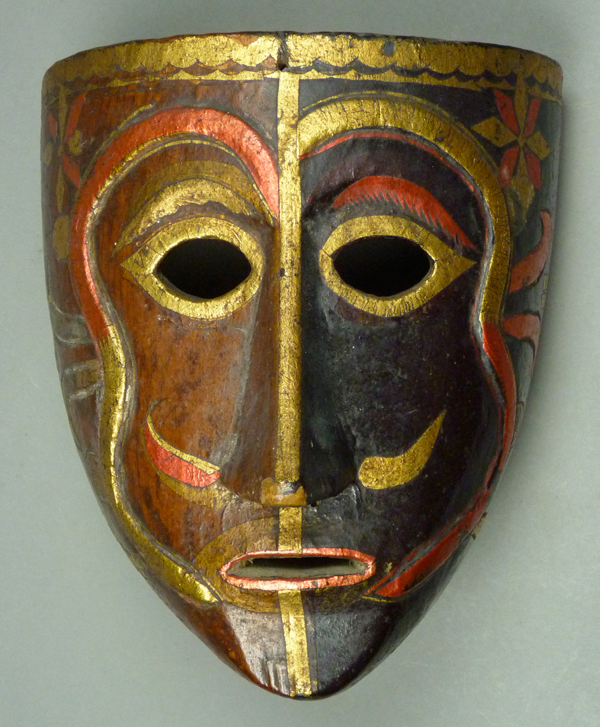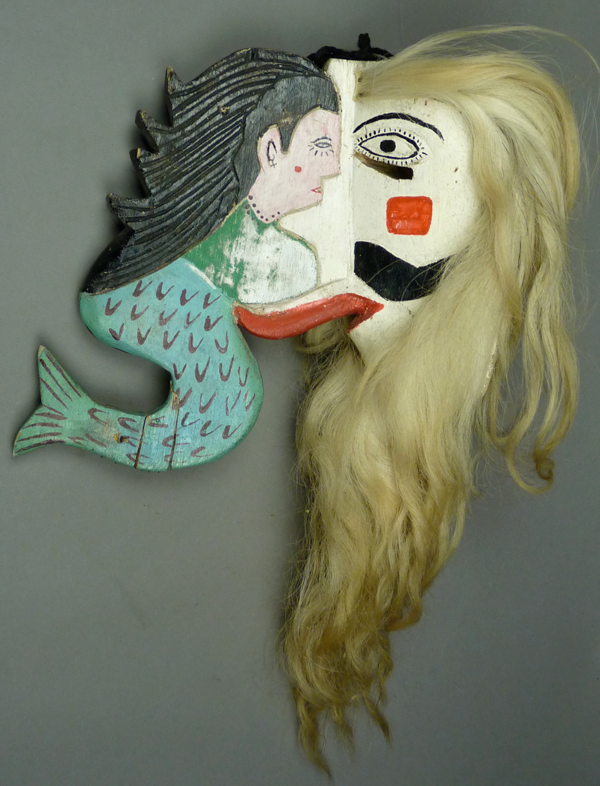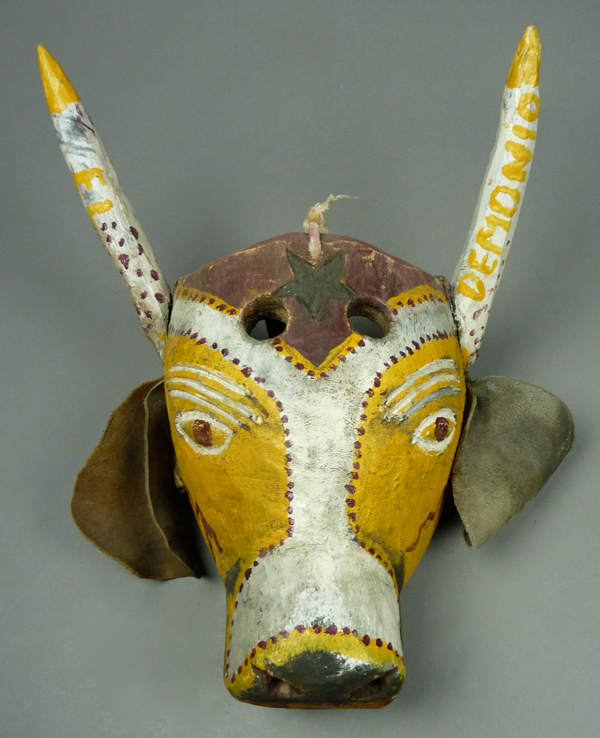Sorting through my masks to prepare the last few posts, I collected an assortment of related material. I will draw from this collection for the present post and a few others over the coming weeks, while the previous related masks are still fresh in our minds. I will begin with a very attractive mystery mask that I bought from Spencer Throckmorton in 1996, along with with three carved wooden wands that would have been carried by the dancers. The mask was said to be from the Mexican state of Hidalgo, and came with no other information. I have never seen a mask exactly like this in any other collection or in any book, although it vaguely resembles the Carnival Moor masks in recent posts. Because I have seen Matachines dancers elsewhere who carried characteristic dance wands, I wondered if this mask had been worn by a Matachin dancer. Here is the mask.
All of the decorative elements on the mask, as well as those on the dance wands, were created with shiny cut paper.
Looking at the mask with fresh eyes after it lay protected in a box for the past twenty years, I was most interested to notice that the face is divided into two halves—one side stained reddish brown and the other side painted black. This alerted me to the probability that this was the face of a supernatural being, and one that straddled some polarity such as life and death (the living dead who appear during Todos Santos or Semana Santa) or good and evil (such as Diablos).




